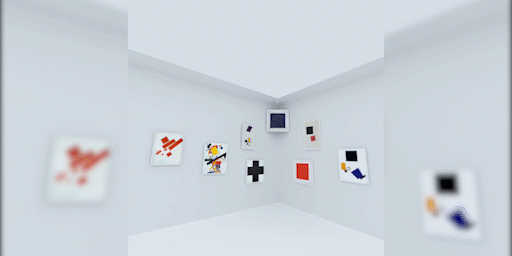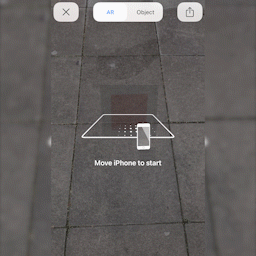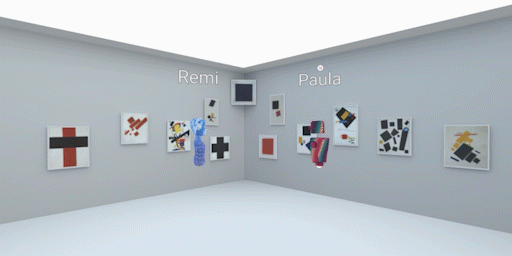
HUBS, VR & AR : THREE IMMERSIVE STORYTELLING THE WEB CAN OFFER TO TELL ART
1915, in Saint Petersburg, a generation of avant-gardes artists called the “Cubo-Futurists” are showing their new work at the Last Futurist Exhibition of Paintings 0,10. This exhibition was the time for them to end their futurist work, and for one of these artists, Kazimir Malevich, it will be the place to give birth to a new painting direction, away from the world of objects and figurative art: Suprematism.
From this exhibition, we have today lost track of some paintings while others are spread in galleries and museums around the world. One of the rare memory we kept from the 0.10 Exhibition is a photograph of the room dedicated to Kazimir Malevich’s paintings. It shows the exhibition of his iconic Black Square. The painting is placed on the top corner of the room, the place traditionally dedicated to icons in Christian-Orthodox culture, which shocked some visitors in 1915. The Black Square is today considered a key work in abstract art history, as it brought an artistic revolution.
This unique photograph tells us many things about the paintings displayed in 1915, the frames used, and the curation chosen by Kazimir Malevich for his first Suprematist works.
From this photograph, a new representation of the 0,10 Exhibition has been created, a virtual one, with the paintings digitally available in high quality. Working at re-creating virtually the 1915’s Exhibition was the start of telling its story with interactive narrations, and starting time travel.

How can we tell the story of the 0.10 Exhibition today ?
The Internet has been opening to new perspectives and possibilities like real-time 3D in web browsers and the development of both Virtual Reality and Augmented Reality. These new web territories come with original ways for visitors to discover content on the web. At the same time, they bring new creative possibilities to developers. The spatial web comes with its own rules for navigation and visualization, where visitors are able to immerse themselves in a landscape of information.
Beyond traditional articles, blogs and videos, follows some potential new ways to tell the story of the 0,10 Exhibition…
I The HUB: Immersing, discovering, socializing
Using Mozilla Hubs, the 0,10 Exhibition can be discovered from a First-Person Point of View. Visitors can move around and make their discovery of the paintings from the angle they feel. More than that, the virtual Hub is an online public place where anyone can meet, speak and take a walk around the gallery, share thoughts about the paintings, or invite friends to spend a moment in this virtual place.
Mozilla Hubs is a web-based platform allowing to connect from most devices running a web browser including smartphones, laptops, and VR Headset, making the connection to the virtual gallery accessible to billions from a simple weblink.
Click on the gallery below to enter the virtual space / or copy the VR Link on your Device
VR LINK
II THE VR EXPERIENCE : seeing, watching and discovering in VR
Virtual Reality made it possible to immerse in content, to be inside a video or a game, rather than experiencing it from the screen of a computer or a smartphone. Therefore, a deeper sense of place and appreciation for objects’ sizes is brought to live for each visitor.
The 0,10 Exhibition has a wide story to tell with many paintings, many shapes placed in the void of their white backgrounds, and many artists who worked a hundred years ago with Kazimir Malevich and the Suprematist movement. This VR experience takes the user to different places and galleries to tell a short story about the exhibition.
Go to 0-10-exhibition.com/VR in a VR Headset or discover the experience in 360 / or watch the preview video

III AUGMENTED EXHIBITION : bringing artwork in your own reality

The walls of the Dobychina Art Bureau of Saint-Petersburg are not holding anymore the Black Square, and the other Suprematist paintings that were exhibited there in 1915 by Kazimir Malevich.
However, visitors with a smartphone or a tablet can re-create the walls with these iconic paintings using Augmented Reality. Any place a camera can detect a floor and a wall in the real world is an opportunity to become a location for an “extended” 0,10 Exhibition. Whether it would be a building wall, a garden, a shop, a tree, or even a parked van, the exhibition can land back with its geometrical shapes, its colors, and its idea of art.
Scan any of the QR codes here and see the paintings of the 0,10 Exhibition in any place you want, still there but virtualized. Or access the AR Exhibition page here.


The Red Square placed on a building wall.
